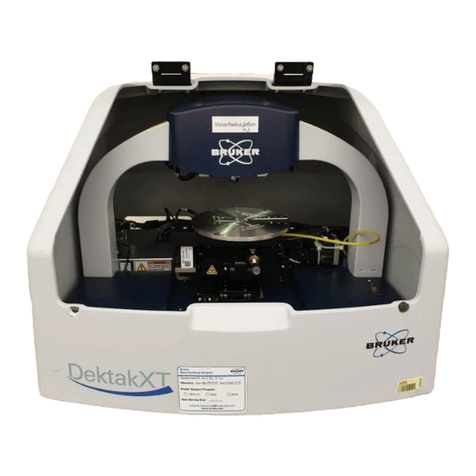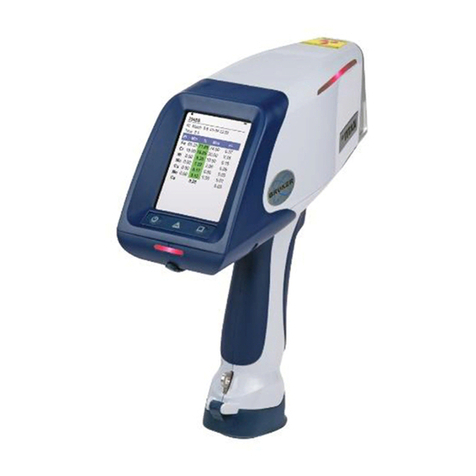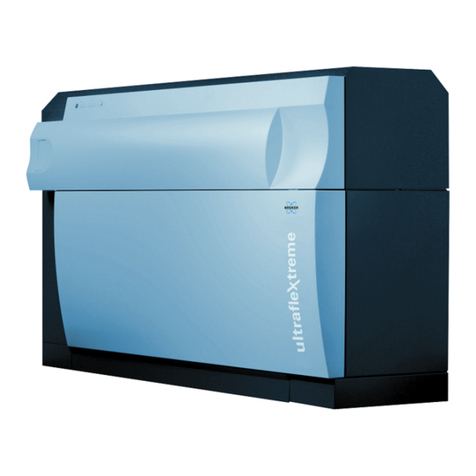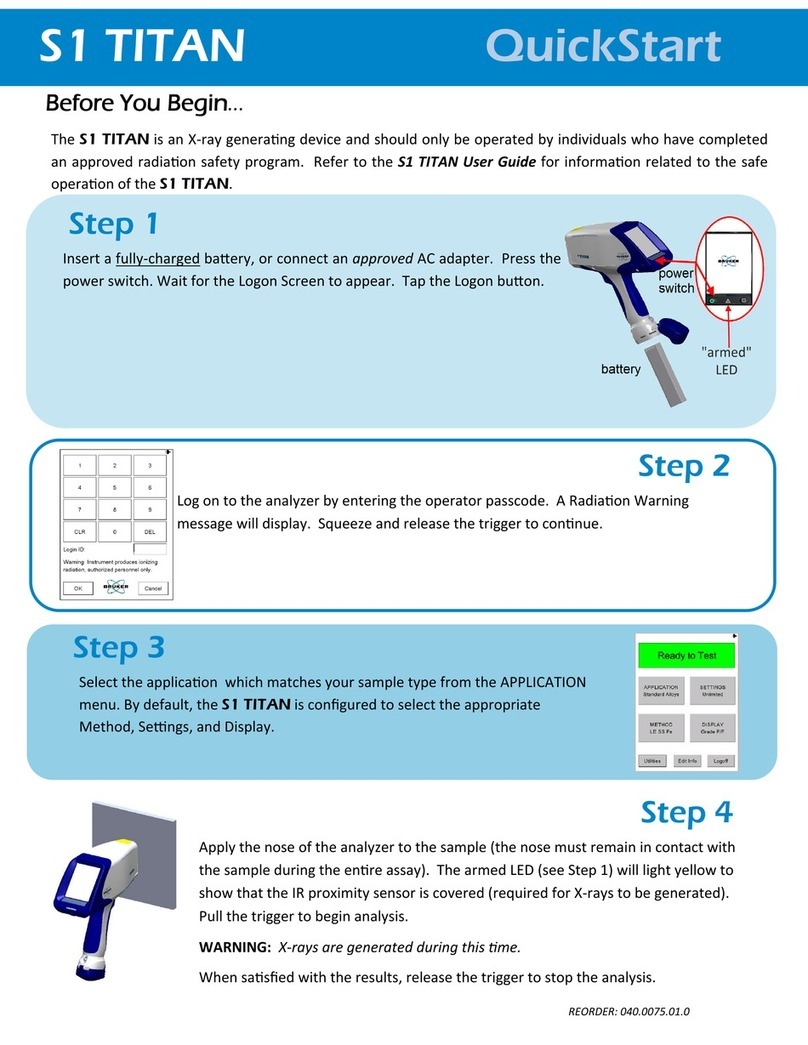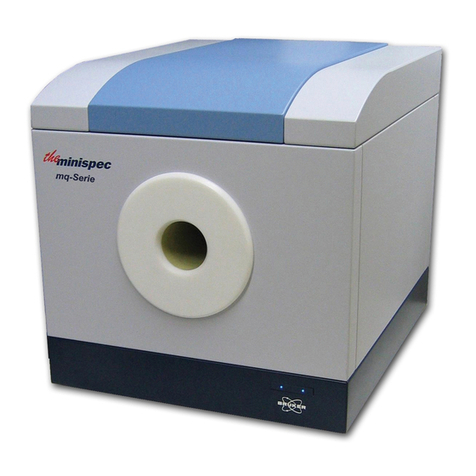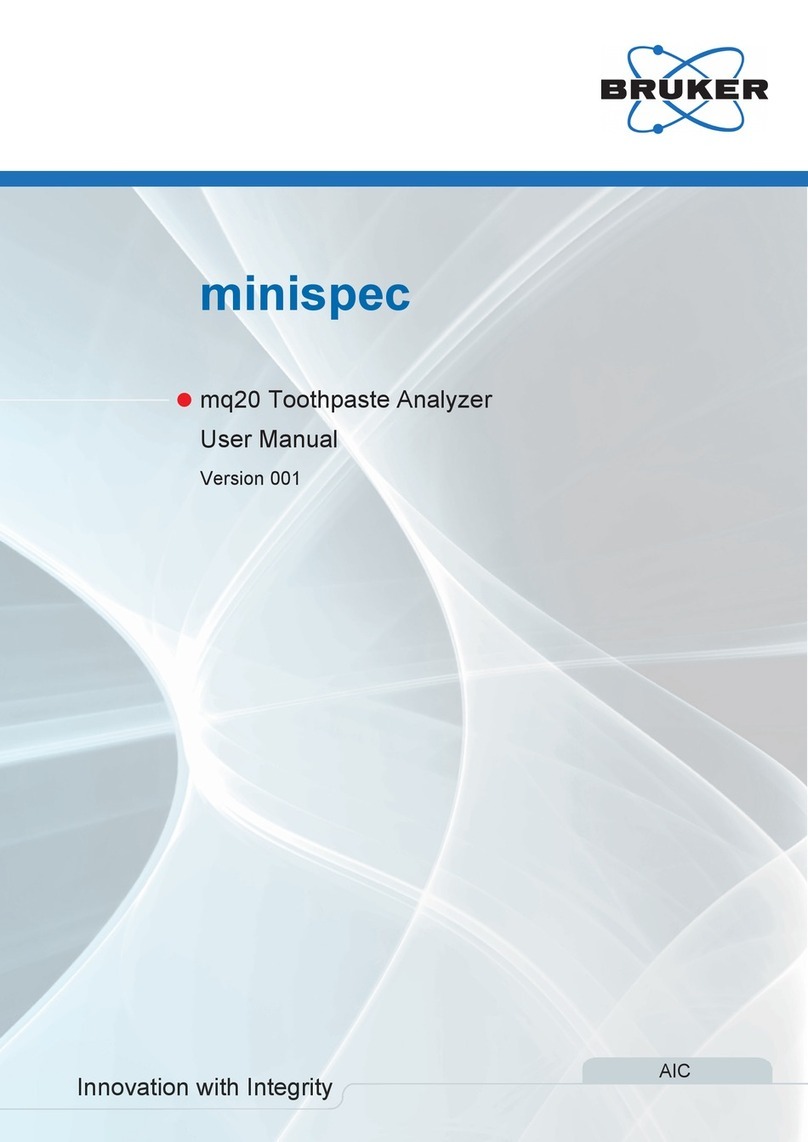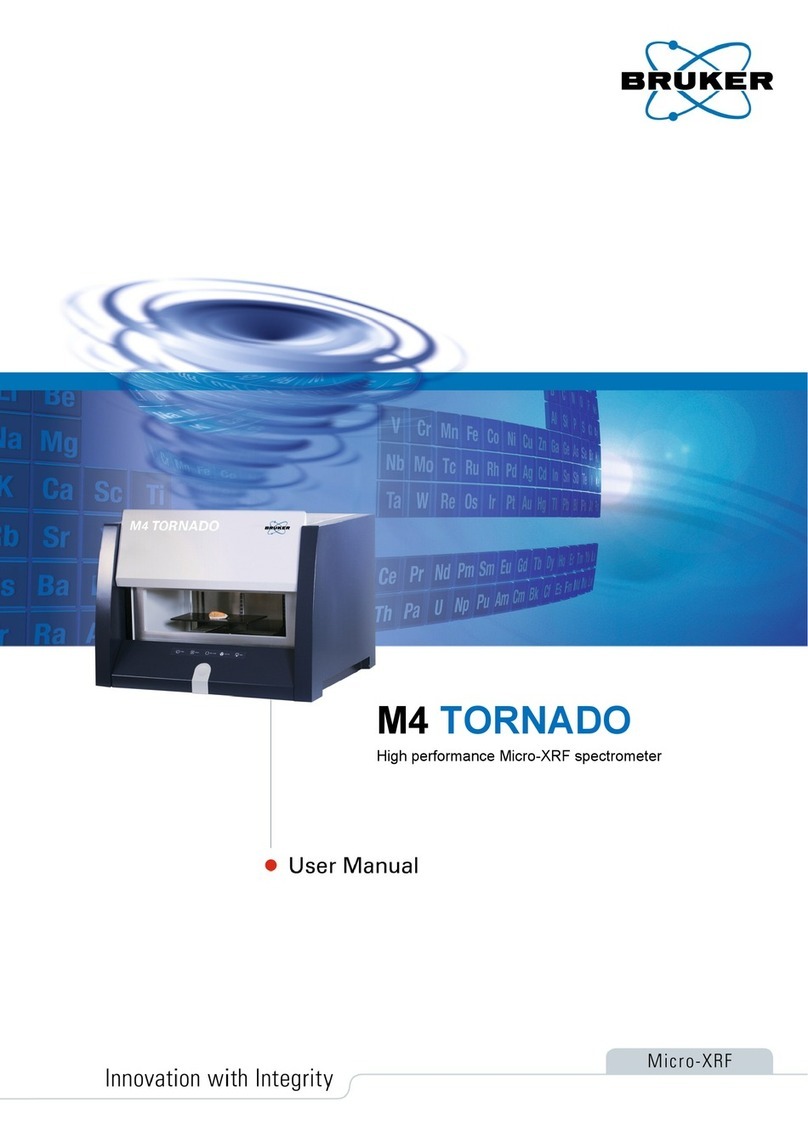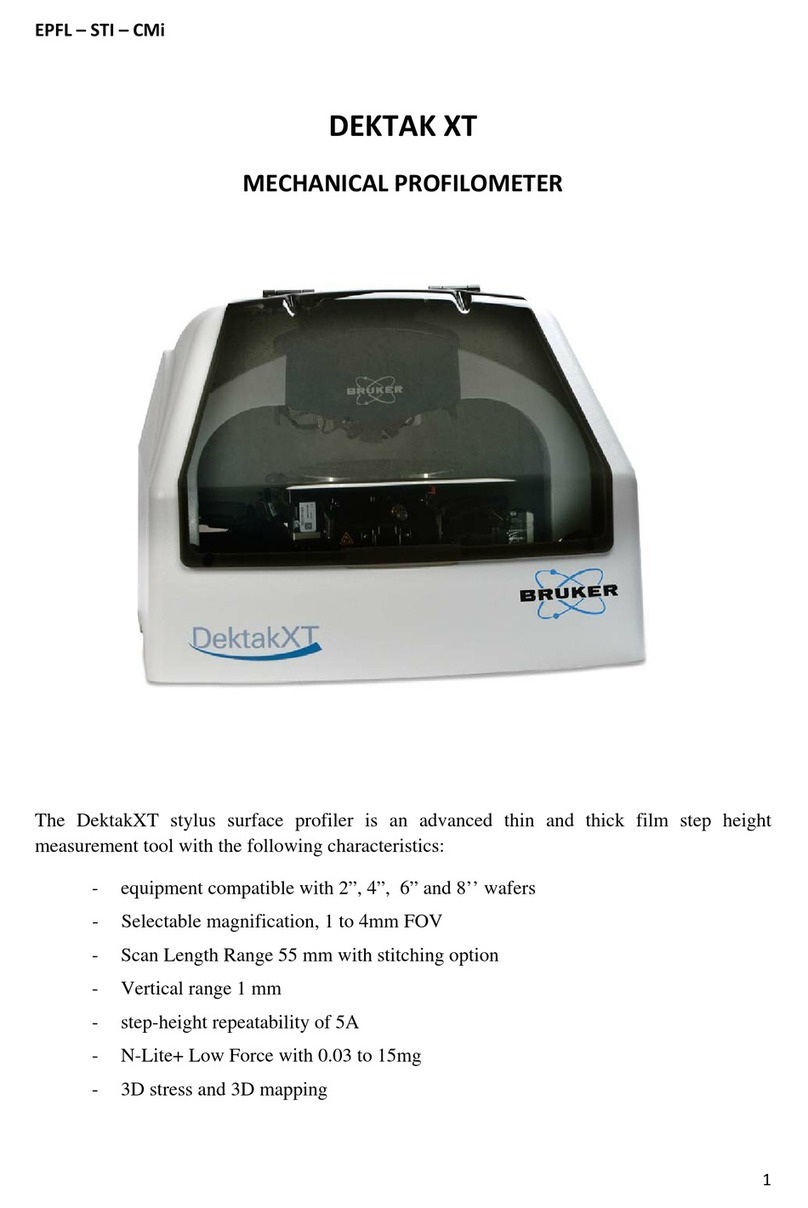
Bruker AXS Handheld Inc S1 TRACER User Manual
Issued: 6/08
Supersedes: New
TABLE OF CONTENTS
Caution:
X-Ray Radiation.................................................................................................................................................................................. i
Important Notes for Bruker AXS Handheld XRF Analyzer Customers...........................................................................................................................ii
Responsibilities of the Customer .........................................................................................................................................................................................iii
1.
S1 TRACER Overview........................................................................................................................................................................................ 1
2.
S1 TRACER Operator Radiation Safety Requirements................................................................................................................................... 4
2.1
W
HAT IS
R
ADIATION
? ......................................................................................................................................................................... 4
2.2
X-R
AY
R
ADIATION FROM THE
S1
TRACER........................................................................................................................................ 5
2.3
H
AND
H
ELD
XRF
A
NALYZER
S
AFETY
D
ESIGN
................................................................................................................................... 6
2.4
S1
TRACER
R
ADIATION
P
ROFILE
.................................................................................................................................................... 11
2.5
U
SING THE
S1
TRACER
S
AFELY
...................................................................................................................................................... 15
2.6
R
ADIATION
S
AFETY
T
IPS FOR
U
SING THE
XRF
A
NALYZER
............................................................................................................... 15
2.7
C
ORRECT
S1
TRACER
P
OSITIONING
................................................................................................................................................ 18
2.8
I
N
C
ASE OF
E
MERGENCY
................................................................................................................................................................... 19
2.9
M
INOR
D
AMAGE
............................................................................................................................................................................... 19
2.10
M
AJOR
D
AMAGE
............................................................................................................................................................................... 19
2.11
L
OSS OR
T
HEFT
................................................................................................................................................................................. 19
2.12
L
ICENSE
/R
EGISTRATION
R
EQUIREMENTS
.......................................................................................................................................... 20
2.13
T
RANSPORTATION
R
EQUIREMENTS
................................................................................................................................................... 21
3.
Principal Components of the S1 TRACER...................................................................................................................................................... 22
3.1
P
RINCIPAL
S1
TRACER
C
OMPONENTS
............................................................................................................................................. 22
3.2
P
RINCIPAL
PDA
C
OMPONENTS
.......................................................................................................................................................... 23
3.3
P
RINCIPAL
V
ACUUM
P
UMP
C
OMPONENTS
......................................................................................................................................... 23
3.4
I
NCLUDED
A
CCESSORIES
................................................................................................................................................................... 24
3.5
A
DDITIONAL
A
VAILABLE
A
CCESSORIES
............................................................................................................................................ 27
3.6
O
PERATING
C
ONDITIONS OF THE
S1
TRACER.................................................................................................................................. 27
4.
Preparing the S1 TRACER for Use.................................................................................................................................................................. 29
4.1
P
OWERING THE
S1
TRACER
AND
PDA ............................................................................................................................................ 29
4.2
V
ACUUM
C
ONFIGURATION
................................................................................................................................................................ 37
4.3
T
ESTING
C
ONFIGURATION
................................................................................................................................................................. 39
4.4
S
TARTING THE
A
NALYZER
................................................................................................................................................................ 42
4.5
A
DJUSTING THE
PDA
B
ACKLIGHT
..................................................................................................................................................... 44
5.
Operation/General Purpose Measure............................................................................................................................................................... 45
5.1
S
TARTING THE
B
RUKER
S1
P
ROGRAM
................................................................................................................................................ 45
5.2
S
AMPLE
P
REPARATION
...................................................................................................................................................................... 49
5.3
A
NALYZER
S
ETTINGS
C
ONFIGURATION
............................................................................................................................................. 49
5.4
A
NALYSIS
M
ODES
............................................................................................................................................................................. 53
5.5
M
AKING
M
EASUREMENTS
................................................................................................................................................................. 56
5.6
V
IEWING
R
ESULTS AND
S
PECTRA
..................................................................................................................................................... 58
5.7
E
DITING
I
NFORMATION
..................................................................................................................................................................... 59
5.8
S
AVING
R
ESULTS AND
S
PECTRA
........................................................................................................................................................ 60
5.9
T
URNING OFF THE
A
NALYZER
........................................................................................................................................................... 60
5.10
V
IEWING AND
E
XPORTING
S
TORED
D
ATA
......................................................................................................................................... 60
5.11
C
HECKING
C
ALIBRATIONS
................................................................................................................................................................ 63
6.
Utilities Menu..................................................................................................................................................................................................... 65
6.1
V
IEW
R
EADINGS
................................................................................................................................................................................ 65
6.2
V
IEW
E
NERGIES
................................................................................................................................................................................. 66
